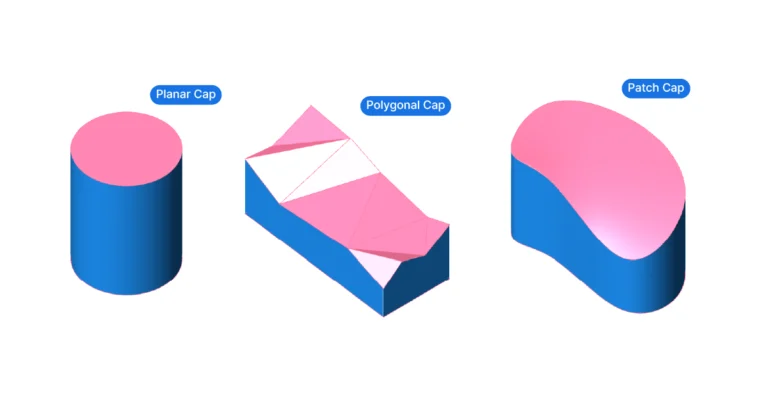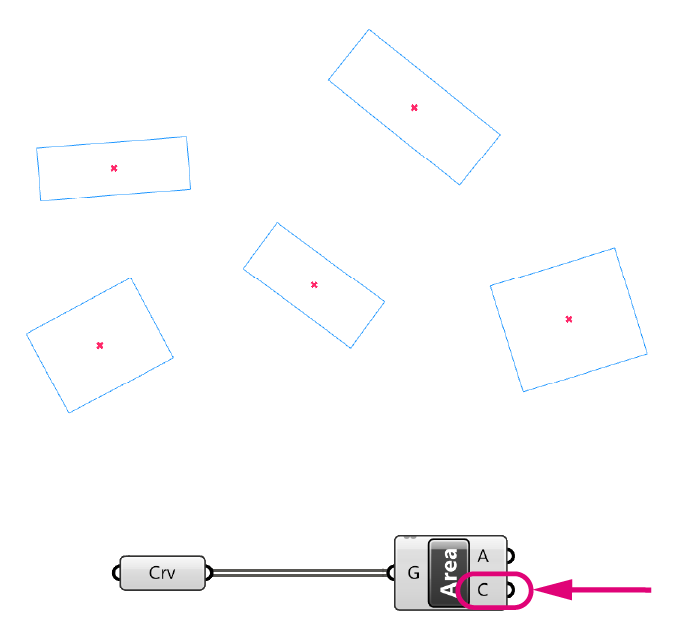Let’s face it, we architects have a love-hate relationship with introductions. ‘I’m an architect.’ Either the conversation flows, or it the awkwardness begins.
If you don’t how to properly introduce yourself as an architect, you might stumble into a verbose explanation of your job, or maybe you’re the one muttering, “I…uh…design buildings”, making architecture sound about as exciting as watching paint dry. Well, fear not!
Believe it or not, there is an art to introducing yourself as an architect. A well-delivered self-introduction can be your golden ticket to making powerful connections, landing new projects, and if nothing else, make a positive first impression!
This blog post is all about developing a compelling, captivating self-introduction.
Prepare to beam with pride and confidence the next time you hear that golden question, “So, what do you do?”

Step 1: State Your Name Clearly
The cornerstone of any introduction is your name. Don’t get ahead of yourself and start with “I’m an architect”. The first question people want answered is who you are, not what you do!
In the heat of battle we often overlook this simple, yet crucial, step.
Think of your name as the ‘architectural entrance’ to your personality. Just as an inviting entrance sets the tone for a memorable building experience, the clear pronunciation of your name sparks intrigue and encourages the listener to explore more about you.
Now, how do we go about this?
Begin by slowing down. Yes, you read that right! Whether you have a short, catchy name or a long, elaborate one, take your time when you say it. Give the listener a chance to commit it to memory.
For example, instead of rushing through a quick ‘Hi, I’m Alex’, try a more distinct ‘Hello, I’m A-lex.’ See the difference? It ensures that your name isn’t lost in the shuffle of words that usually follows.
Next, pair your name with a friendly smile. A warm smile and eye contact, reinforce your name and make it more memorable.
If you have an unusual or unique name, be prepared to offer a phonetic helper – a word that your name sounds similar to. Maybe there is even a way to add a touch of humor to your introduction that way! But test it out, if you get strange looks instead of a laugh, tone it down.
Set the foundation of a strong introduction by presenting your name clearly, proudly, and unapologetically.
Step 2: Share Your Role, Specialty, and Company
The next crucial aspect to address as you introduce yourself as an architect is your role, your specialty, and the company you work for. But the mere, “I’m an architect,” won’t start a compelling conversation. We need to add some depth.
Here is a trick do make it more engaging: Follow up not with what you do, but what your work enables for your clients and others.
If you’re a residential architect, instead of saying “I design homes,” try, “I help families build their dream homes from the ground up.”
Commercial architects can transform “I design offices” to “I create innovative workspaces that foster productivity and collaboration.”
See the difference? You’ve not only communicated your role but also presented it in a way that the listener can immediately relate to. It’s not about the buildings; it’s about the dreams and visions encapsulated within these structures.
If you have a specialty in architecture, be it sustainable design, parametric design, historic preservation, or urban design, now is the time to mention it. It distinguishes you from other architects – the more specific your introduction is, the listener is much more likely to remember you. Especially if you are at a networking event, and another dozen architects introduced themselves to your listener.
Lastly, don’t forget to mention your company or firm. It gives a sense of your work’s scale and context. Don’t get discouraged if your firm isn’t well-known. Use this as an opportunity to discuss what sets your company apart.
So, let’s piece it together. Instead of “I’m an architect at XYZ firm,” you could say, “At XYZ firm, I design eco-friendly residential spaces that harmonize with their natural surroundings.” This introduction isn’t merely informative; it’s a compelling narrative of your architectural journey.
By mindfully adding color as you introduce yourself beyond the dry “I’m an architect” by sharing the value you create, your specialty, and company, you’re inviting your audience to engage in a conversation about the impact and details of your profession.
Step 3: Express Your Design Philosophy
If you or your company have a design philosophy that sets them apart, now is the time to mention it.
Consider what truly drives your architectural designs. Is it sustainability? Human-centered design? The integration of natural elements? Whatever it may be, express it in a way that paints a vivid picture, one that’s easy to grasp even for a non-architect.
For example, instead of saying, “Our company focuses on sustainable design.” you could say, “We believe in designing spaces that respect and enhance their natural surroundings, creating a harmonious balance between built and natural environments.”
But don’t stop there. Your design philosophy isn’t just about the ‘what,’ but even more so the ‘why.’ Why do you believe in this philosophy?
So, if you’re an architect who prioritizes sustainable design, instead of merely stating that, you could say, “I’m passionate about sustainable design because I believe architecture plays a crucial role in creating a greener, more sustainable future.”
A well-articulated design philosophy not only gives your listener a deeper understanding of your work but also kindles a connection on a more personal, emotional level.
Introducing yourself isn’t just about sharing your professional credentials. It’s about showcasing your passion, and what drives you.
Step 4: Describe Your Work and Highlight Key Projects
Once you’ve laid the foundation of your name and role, if everything goes well, the conversation will segue to what you are currently working on. You can seamlessly transition from your core philosophy to a project that reflects that design ideology, further adding depth to your persona.
But don’t make the mistake of mentioning details that may only be appreciated by other architects. Mention the more relatable information, like the location, the client, the building program and perhaps what is unique about that particular project.
When describing your work, focus on the impact rather than the technical processes. You’re not delivering a lecture on architectural technique, but painting a picture that engages your listener.
Next, when discussing key projects, be careful not to slip into architectural jargon. Say, for instance, you were instrumental in designing an energy-efficient office building. Instead of delving into the details of the design, you could say, “One of my key projects involved creating an office building that harnesses natural light, significantly reducing its energy consumption.”
If you are not currently working on a particularly interesting project, mention the project you are most proud of that you’ve worked on in the past years. Nobody is going to mind if you segue to “Just last year we completed a [building type] for [client/company] in [location]…”
Remember, learning how to introduce yourself as an architect is just the starting point of a hopefully interesting and connection-building conversation!
Speak Their Language: Tailoring Your Architectural Introduction to Your Audience
Are you speaking to a fellow architect, a potential client, or perhaps a stranger at a social event? You won’t introduce yourself as an architect at an architecture conference. To make sure your introduction is effective, tailor it to the listeners’ interest and understanding.
First, gauge the level of architectural knowledge your listener possesses. Based on that, decide the amount of jargon to use or the complexity of concepts to share. The trick is to make your narrative engaging without making it overwhelming.
For instance, while explaining a design concept to a fellow architect, you might delve into details about the technical aspects. However, for a potential client, you might focus more on the benefits or aesthetic appeal of your designs.
Second, pay attention to their interests. What seems to capture their attention or spark their curiosity? Is it your latest eco-friendly design? Or perhaps they’re fascinated by the historical preservation aspect of your work? Adjust your narrative to emphasize the elements that your listener finds most appealing.
Lastly, but importantly, remember that an introduction isn’t a monologue. It’s the first step in building a dialogue, a connection. Engage your listener with questions about themselves and their experiences as well.
Communicating with Clarity and Confidence: the Key to a Successful Architect’s Introduction
As you introduce yourself as an architect, half of the impact of your introduction hinges on the clarity and tone of your communication.
To start, let’s talk about clarity. Architecture may be filled with technical terminologies and complex concepts, but remember, your introduction isn’t a professional presentation. It’s a conversation. Keep your language simple, your sentences crisp, and your ideas easily understandable.
Next, let’s move on to confidence. Don’t focus on the words alone, focus on a confident delivery as well! But don’t confuse confidence with arrogance. It’s about expressing yourself with a self-assured ease that invites trust and respect from your listener.
Stand tall, make eye contact, and let your passion for architecture shine through your words.
Additionally, don’t forget to embrace the pauses. They are the architectural negative spaces of your conversation, providing room for the listener to absorb and reflect on what you’ve shared.
There’s one more crucial element the tone. You need to strike the right balance between confidence and humility. Although they sound contradictory, they are actually complementary.
Confidence shows that you believe in your abilities and achievements; humility reveals your willingness to learn and grow. It’s about owning your expertise without overshadowing others’ contributions.
For example, instead of stating, “I designed an award-winning building,” add a dose of humility by saying, “I had the privilege to lead a talented team in designing a building that won an award. I learned so much from the process.”
Summing up, speak calmly, clearly, and respectfully. Remember, true confidence doesn’t need to shout, and genuine humility isn’t self-deprecating.
Perfecting Your Architectural Introduction: Practice, Practice, Practice
The final piece of advice, and perhaps the most important, is to practice regularly. In learning how to introduce yourself as an architect effectively, consistency is key. The more you rehearse your introduction, the more comfortable and natural your delivery will become!
Think about it this way: as architects, we don’t turn our first sketch into plans and sections, right? The same principle applies to your introduction. The more you practice, the more comfortable and natural your delivery will become.
Start by rehearsing in front of a mirror. Watch your body language, monitor your tone, and pay attention to the flow of your words. It might feel a little awkward, but better to feel awkward in front of your mirror than in front of an important potential client!
Then, use opportunities to introduce yourself in various settings. Whether it’s a professional networking event, a casual conversation with a new acquaintance, or a virtual meeting, each situation is a chance to refine your introduction.
Finally, remember that practicing regularly doesn’t mean memorizing a script. Instead, it’s about internalizing the key components of your introduction, so you can express them genuinely and adapt them dynamically to match the situation.
Conclusion
In conclusion, understanding how to introduce yourself as an architect is about finding the right balance between professional details, personal elements, clear communication, and humility. It’s about connecting with your audience on a personal level while showcasing your passion and expertise in architecture.
So go ahead, practice introducing yourself, adapt, refine, and above all, enjoy the process. Because each introduction is not just a conversation starter, it’s an opportunity to leave a lasting impression as unique and inspiring as the architectural designs you create.






